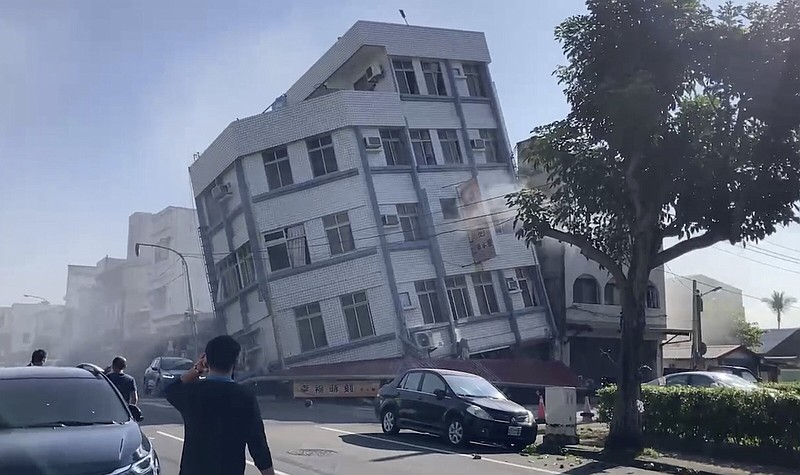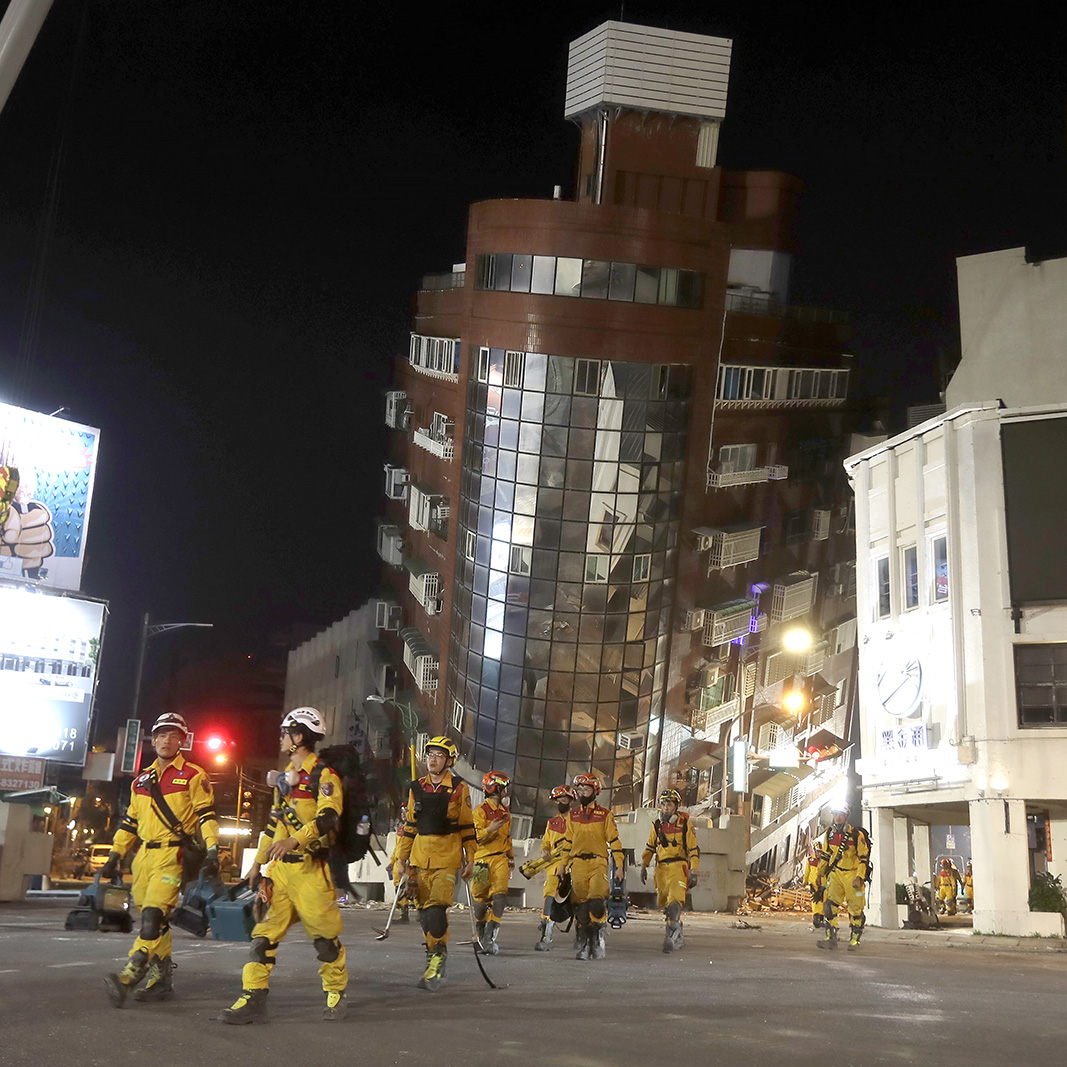HUALIEN, Taiwan -- The strongest earthquake in a quarter-century rocked Taiwan during the morning rush hour Wednesday, killing nine people, stranding dozens of workers at quarries and sending some residents scrambling out the windows of damaged buildings.
The quake was centered off the coast of rural, mountainous Hualien County, where some buildings leaned at severe angles, their ground floors crushed. Just over 93 miles away in the capital of Taipei, tiles fell from older buildings, and schools evacuated students to sports fields as aftershocks rattled the island nation.
Rescuers fanned out in Hualien, looking for people who may be trapped and using excavators to stabilize damaged buildings. The numbers of people missing, trapped or stranded fluctuated as authorities learned of more in trouble and worked to locate or free them.
Some 70 workers who were stranded at two rock quarries were safe, according to Taiwan's national fire agency, but the roads to reach them were damaged by falling rocks. Six workers were going to be airlifted today.
Taiwan is regularly jolted by quakes and its population is among the best prepared for them. But authorities expected a relatively mild earthquake and did not send out alerts.
Officials said the quake was the strongest to hit the island since 1999, when a 7.6-magnitude tremor struck central Taiwan, killing more than 2,400 people. After that earthquake, one of the worst in the island's recent history, authorities mandated stricter building codes.
Lu Chin-wen, an architect who helped with reconstruction after the 1999 earthquake, said structures built after the new regulations were stronger and that may have helped. "If buildings are damaged but not destroyed, the casualties will be relatively fewer," he said.
In recent years, city governments have launched various campaigns to upgrade older buildings to make them more earthquake-resistant. Since 2019, the government has been reviewing 36,000 buildings across the country that were built before 1999 and providing subsidies to upgrade them.
At least nine people died in the quake, which struck just before 8 a.m., according to Taiwan's fire agency. Most of the fatalities were caused by falling rocks, including four people who were struck inside Taroko National Park, according to the state Central News Agency. One died in a residential building that was damaged, the news agency said.
A small tsunami washed ashore on southern Japanese islands but caused no damage.
At least 1,011 people were reported injured. Authorities initially lost contact with 50 hotel employees in minibuses in the national park after the quake downed phone networks; three employees walked to the hotel, while the others remained stranded.
The quake and aftershocks caused 24 landslides and damaged roads, bridges and tunnels. The national legislature, a converted school built before World War II, and sections of the main airport in Taoyuan, just south of Taipei, also saw minor damage.
Hualien Mayor Hsu Chen-wei said 48 residential buildings were damaged in the city, which shares a name with the county. Hsu said water and electricity supplies were in the process of being restored.
Taiwan's earthquake monitoring agency said the quake was 7.2 magnitude while the U.S. Geological Survey put it at 7.4. It struck about 11 miles off of Hualien, on Taiwan's east coast, and was about 21 miles deep. Multiple aftershocks followed.
Traffic along the east coast was at a virtual standstill after the earthquake, with landslides and falling debris hitting tunnels and highways. Train service was suspended across the island of 23 million people, with some tracks twisted by the stress of the quake, as was subway service in Taipei, where sections of a newly constructed elevated line split apart but did not collapse.
The initial panic after the earthquake quickly faded on the island, which prepares for such events with drills at schools and notices issued via public media and mobile phone.
By noon, the metro station in the busy northern Taipei suburb of Beitou was buzzing with activity again.
Taiwan lies along the Pacific "Ring of Fire," the line of seismic faults encircling the Pacific Ocean where most of the world's earthquakes occur.
Information for this article was contributed by Johnson Lai, Christopher Bodeen and Simina Mistreanu, Mari Yamaguchi, Ken Moritsugu, Lorian Belanger, Jim Gomez and Audrey McAvoy of The Associated Press and by Lily Kuo, Julie Mio Inuma, Vic Chiang, Pei-Lin Wu, Júlia Ledur and Gerrit De Vynck of the Washington Post.

